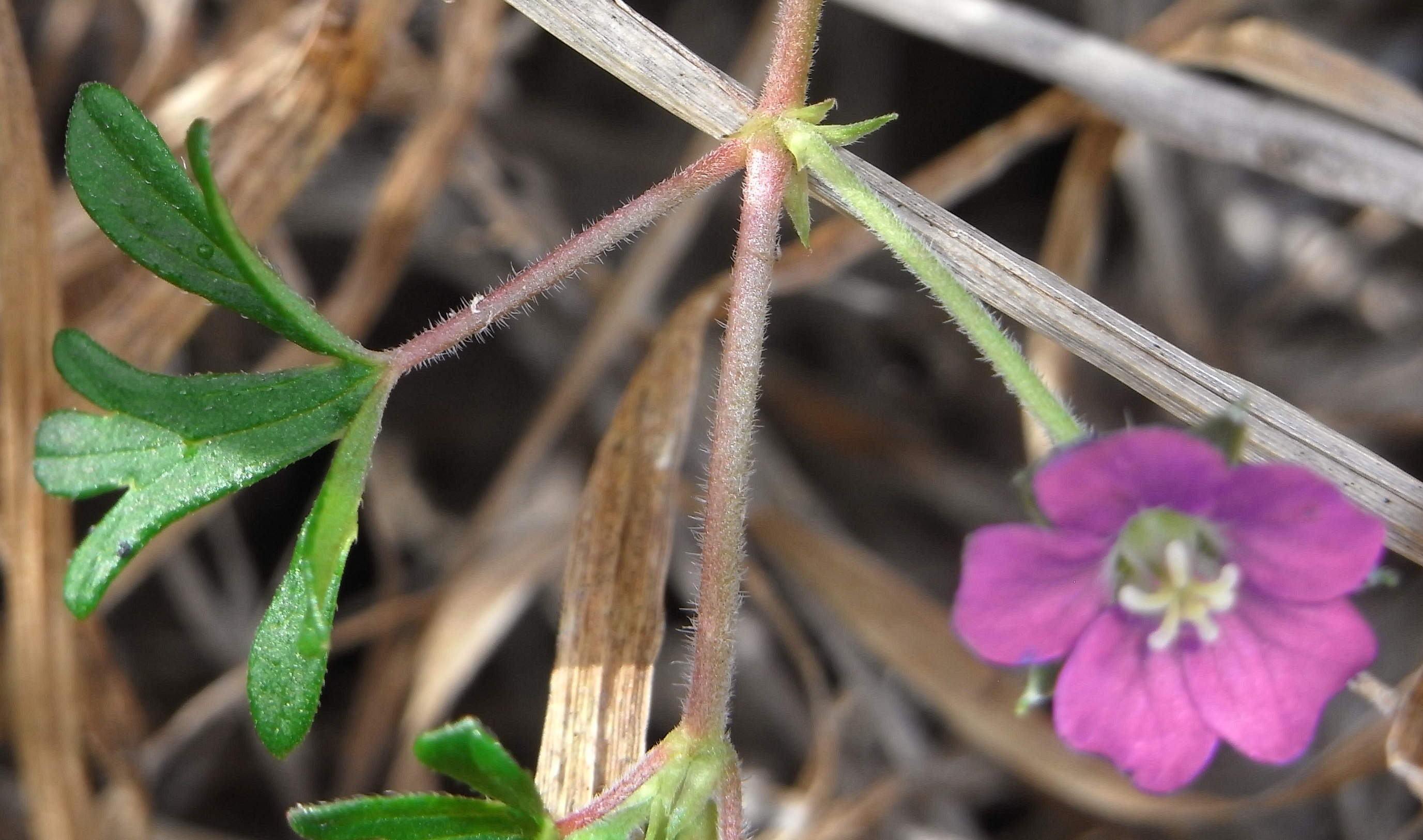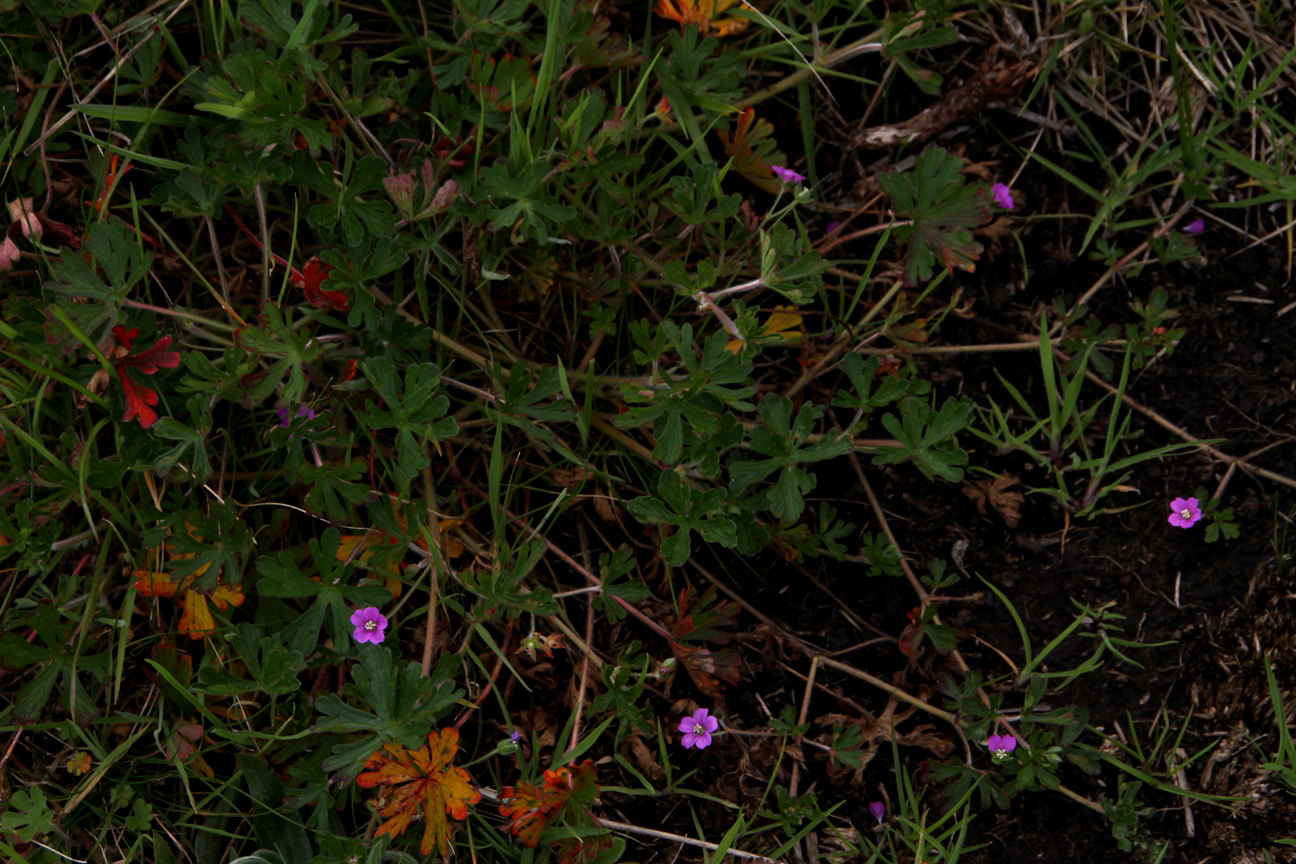


Austral Crane's-bill
Geranium solanderi
Trailing perennial herb to 50 cm. Round leaves deeply divided into 5-7 narrow lobes each forked two or three times. Paired or single bright pink flowers with distinctly notched petals. Edible round to turnip-shaped taproot.
| Details | |
|---|---|
| Flora Type | Herbs |
| Former Scientific Name | Geranium solanderi var. solanderi |
| Distinctive Features | Stems and stalks covered with dense short to long hairs at right-angles to the plant. Flowers similar to G. retrosum but twice the size, with narrow lobes. |
| Biology | Perennial. Common and widespread in a range of habitats. Long-lived species. May persist in disturbed sites. Seed has an awn or bristle that helps it to pierce the soil crust for germination. |
| Native Status | Native |
| Flowering Time | Oct-Jan |
| Taxonomy | |
|---|---|
| Phylum | Tracheophyta (Vascular Plants) |
| Class | Magnoliopsida (Flowering Plants) |
| Order | Geraniales |
| Family | Geraniaceae |
| Genus | Glyceria |
| Species | australis |
Many Geranium species have branched or single tapered tuberous taproots that were roasted as food by Aboriginal people. This species has a turnip-shaped edible taproot. The roots of some species contain high levels of tannins and were used as an anti-diarrhoeal.Listed as a threatened species in Vic.
| Interesting Facts | |
|---|---|
| Similar Species | There has been taxonomic studies of Geraniums, particularly members of the G. solanderi complex. confusion with G. beardsdellii, G. pallidiflorum, G. inundatum, G. carrolii, G. ciliocarpum, G. gardneri. |
| Native Status | Native |